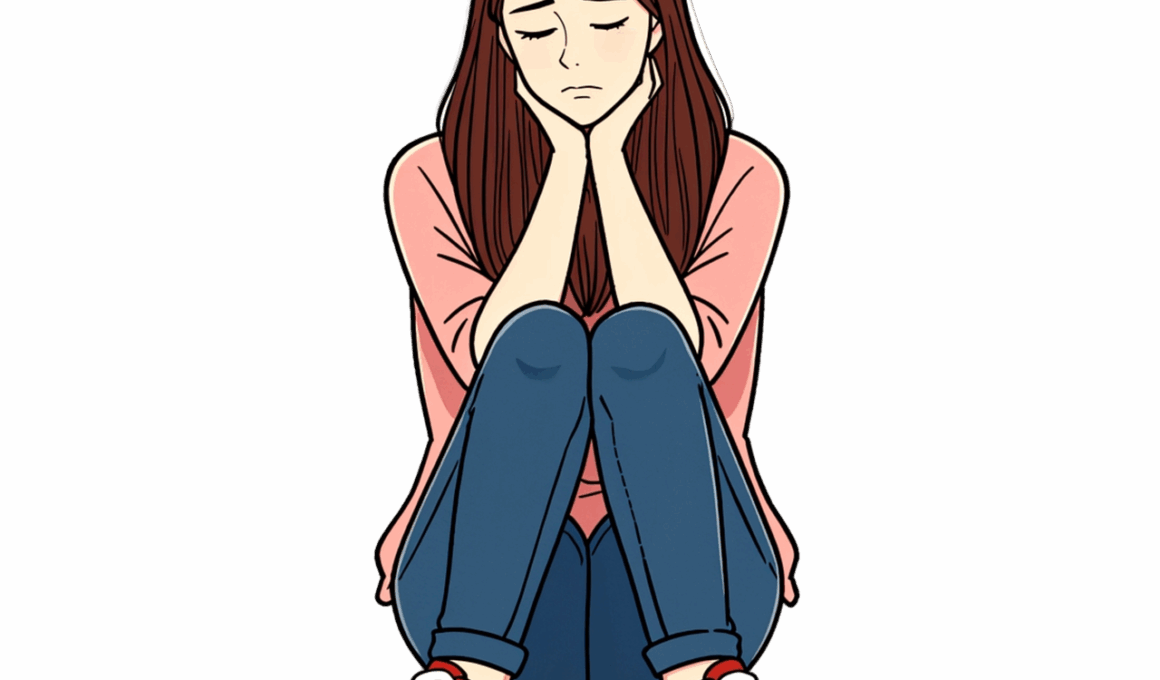Body Dysmorphia and Eating Disorders: A Closer Look
Eating disorders, such as anorexia nervosa, bulimia nervosa, and binge eating disorder, frequently combine with body dysmorphic disorder. Body dysmorphia is a mental health condition where individuals obsess over perceived flaws in their appearance. These obsessive thoughts can significantly affect one’s self-esteem, emotional health, and social interactions. Sufferers may go to extreme lengths to hide or alter their looks, creating a vicious cycle of negative self-image and unhealthy behaviors. According to research, around 1 in 50 people suffer from body dysmorphic disorder, which can develop in adolescents and adults alike. The relationship between eating disorders and body dysmorphic disorder often begins with a focus on weight, leading to unhealthy coping mechanisms. Some might resort to extreme dieting, excessive exercise, or harmful weight control measures, further exacerbating their mental burden. It is crucial for individuals struggling with these issues to seek help, as early intervention can lead to recovery. Mental health professionals emphasize the need for comprehensive treatment programs that include psychological therapy, nutritional counseling, and medical support. Addressing both conditions simultaneously enhances the chances for successful recovery.
Understanding the Symptoms and Signs
Recognizing the symptoms of body dysmorphia and its relationship with eating disorders is key for timely intervention. Common signs may include preoccupation with various imperfections, avoidance of mirrors, and negative body talk. Individuals may frequently change their clothing, use excessive cosmetics, or experience anxiety in social situations. People with eating disorders often exhibit additional physical signs, including drastic weight loss, fatigue, isolation, and mood swings. Those suffering from both conditions may manifest uncontrollable urges to exercise or purge following meals. Family and friends may play a pivotal role in noticing these symptoms, urging loved ones to seek professional help. Early understanding of these symptoms can prevent the escalation of mental health issues. Anxiety linked to negative body image can lead to depression, social withdrawal, and suicidal thoughts. Due to the stigma surrounding mental health, many individuals hesitate to disclose their feelings and struggles. Increasing public awareness regarding the signs and symptoms of body dysmorphia and related eating disorders encourages conversations and de-stigmatizes treatment. Encouraging those affected to talk about their feelings helps normalize seeking support.
In exploring the impact of body image on mental health, we must examine societal factors. Media representation plays a significant role in shaping perceptions of beauty and ideal body standards. Frequent exposure to images of ultra-thin or muscular bodies can contribute to feelings of inadequacy. Social media platforms can enhance these pressures as individuals compare themselves to curated depictions of perfection. Studies show that social media use can trigger or worsen body dissatisfaction, particularly among young people. Negative comments from peers can exacerbate feelings of shame, leading to unhealthy behaviors, including restrictive eating and self-harm. The beauty industry further perpetuates unrealistic ideals, contributing to the pervasive culture of discontent. Such societal pressures often create a breeding ground for eating disorders and body dysmorphic disorder. Under these influences, individuals may develop distorted self-views, prioritizing appearance over health. To counter these societal messages, movements promoting body positivity and self-acceptance are becoming more prevalent. Educational programs addressing media literacy help individuals critically assess images and resist harmful pressures. Empowering people to define beauty on their own terms can mitigate the harmful effects of societal expectations.
The Path to Recovery
Recovery from body dysmorphia and eating disorders is multifaceted and requires professional support. Effective treatment often combines psychotherapy, nutritional counseling, and, in some cases, medication. Cognitive Behavioral Therapy (CBT) has shown positive outcomes, focusing on changing negative thought patterns. Treatment programs tailored to individual needs can provide a safe environment for healing. Support groups also offer understanding, empathy, and shared experiences, making recovery less isolating. Patients are often encouraged to develop healthy coping strategies that replace harmful behaviors. Family involvement in therapy can be instrumental, as it fosters communication and understanding. Moreover, educating family members about these disorders enhances their ability to provide support. Practitioners emphasize the importance of a holistic approach, addressing physical and emotional needs. Nutrition education helps patients cultivate a positive relationship with food, breaking the cycle of restriction and bingeing. Goal setting supports progress while allowing individuals to track their improvements. Recovery may not be linear; setbacks can occur, but perseverance is vital. A strong support system can facilitate resilience, guiding individuals towards a healthier self-image and improved mental health overall.
Awareness and education about body dysmorphia and its effects on mental health are critical. Schools, families, and communities must engage in open discussions that foster understanding. Comprehensive educational programs should address topics like body image, self-esteem, and mental health. Teaching young individuals to recognize toxic media messages encourages resilience. Encouraging critical thinking about images helps mitigate harmful comparisons. Schools can incorporate behavior-driven learning that promotes mental health awareness among students. Community organizations can host workshops and events aimed at fostering body positivity, open dialogue, and resource availability. Online platforms can serve as outreach tools, generating discussions and educational content. Partnerships with mental health organizations can help spread awareness of available resources. Utilizing social media for positive messaging reaches wider audiences and combats misinformation. Each initiative plays an essential role in creating an environment where individuals feel supported in discussing their challenges. Furthermore, facilitating connections between peers creates a sense of belonging, reducing stigma. Awareness efforts empower individuals to seek help and support, ultimately paving the way for systemic change. Increased awareness will contribute to more compassionate communities that promote mental health positivity.
The Role of Health Professionals
Health professionals play a critical role in recognizing and treating body dysmorphia and eating disorders. Trained specialists can identify the underlying factors contributing to these disorders, providing appropriate treatment plans. Physicians are often the first point of contact for individuals seeking help, as they can provide referrals to mental health professionals. Psychologists and therapists specializing in eating disorders and body image issues have the expertise to guide patients through recovery. Nutritionists and dietitians form an integral part of treatment, helping clients rebuild a healthier relationship with food. Collaborative care involving a team approach ensures comprehensive support for patients. Regular assessments enable health professionals to monitor progress and adjust treatment plans accordingly. Knowledge of the latest research and treatment strategies sets a foundation for effective interventions. Training programs for healthcare providers can enhance their understanding of mental health issues related to eating disorders. Stigma reduction in clinical settings is crucial, as it allows patients to feel safe disclosing their struggles. Ultimately, supportive healthcare environments foster trust and facilitate positive patient experiences. Creating awareness among health professionals increases their capacity to make impactful changes in the lives of those suffering.
Body dysmorphia intertwined with eating disorders presents significant challenges, but hope exists in education and advocacy efforts. The understanding of these conditions must expand to encompass both psychological and societal aspects. Continuous research is essential in developing effective interventions and support strategies. Advocacy groups are vital in promoting change through awareness campaigns and policy initiatives. Encouraging dialogue between healthcare providers and communities is crucial for addressing stigma and misinformation. Collaborations with schools can cultivate environments focused on mental well-being, resilience, and self-acceptance. Individuals inspired by successful recovery stories can become advocates themselves, helping others navigate their challenges. Social media can amplify positive messages, leading to a culture that celebrates diversity in appearance. Balancing education, treatment, and advocacy can promote a compassionate community committed to mental health. The interconnectedness of body image and mental well-being highlights the need for holistic approaches. Collaboration among stakeholders will foster environments where individuals feel safe seeking help. Ultimately, it is the collective effort that can break the cycle of body dysmorphia and eating disorders, paving the way for recovery and emotional resilience.


